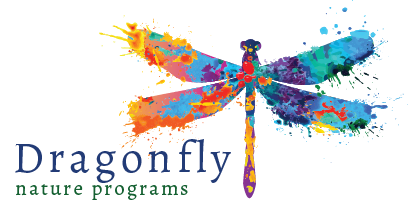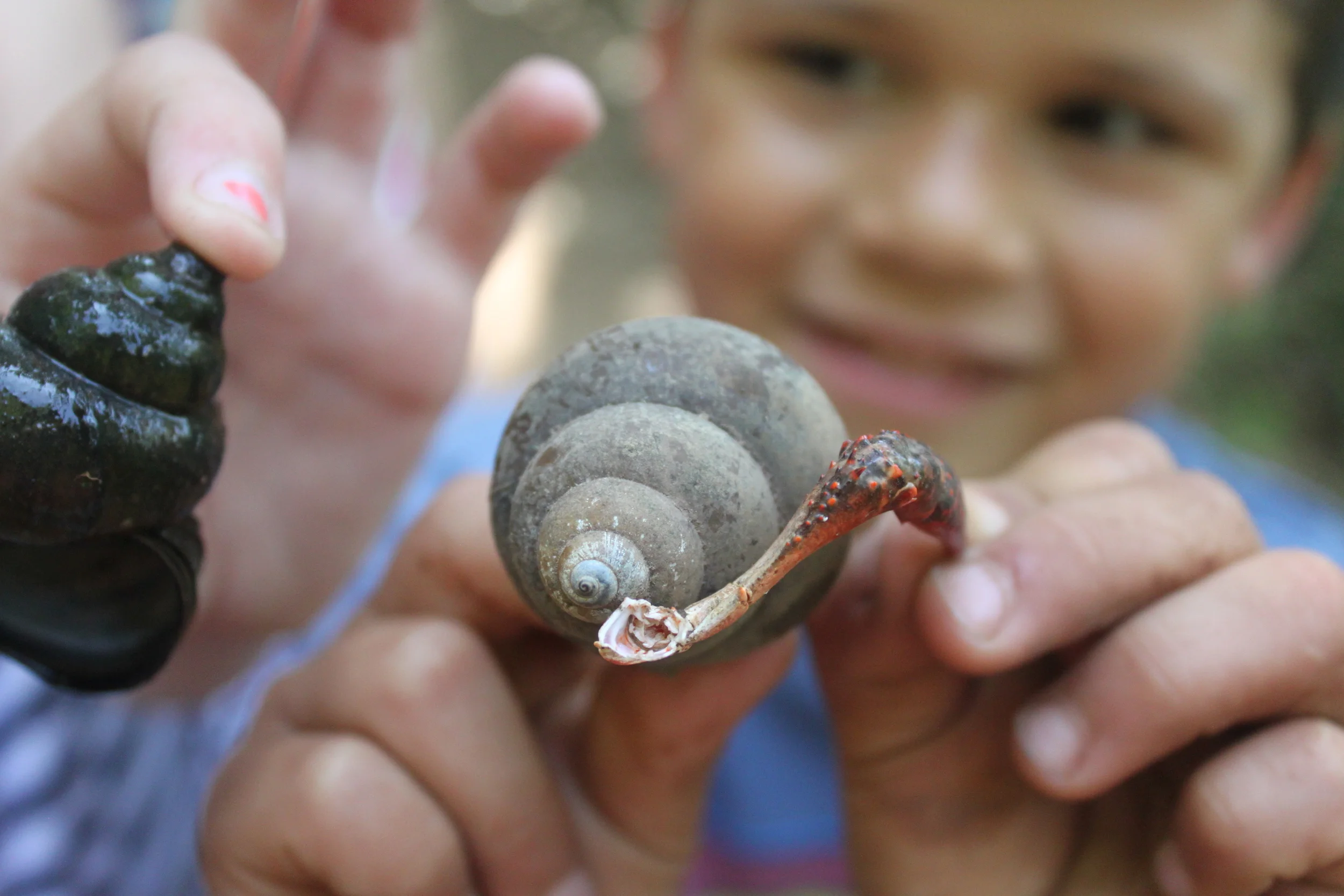“Just keep swimming.”
First and foremost, I want to extend a heartfelt thank you to the amazing teachers who are braving this new world of virtual teaching and learning. I realize you are building the plane as you fly! Well wishes to the parents who are moving heaven and earth to support your children this school year, and to the students, from the ones just starting out, to the ones finishing up and everyone in between, I know we’ve asked a lot of you lately. You can and will get through this school year. But if any of you out there is struggling to get through this moment, borrow my mantra for awhile (well, Dory’s mantra). “Just keep swimming.” We will all make it through to the other side.
Teachers, I wanted to find ways to support your virtual work and so I’ve compiled some wonderful tools to help you connect children with nature during this unusual year. There are so many tremendous reasons for encouraging our students to go outside: exercise, clean air, a break for the eyes and the rumps (stuck in a chair all day). A lift for the spirit, some vitamin D and quite frankly the endless number of lessons nature shares with us, anytime we are willing to open up to its wonder! So, let’s get our students outside!
I have a little something for everyone this month, from pre-K to AP high school classrooms. The resources shared below are all designed to support outdoor education and each has its pros and cons which I’ve listed to help you make the best choice for your classroom. Do not hesitate to reach out with questions.
iNaturalist
Purpose: Put quite simply on their webpage, to “connect with nature”.
Best for grades: 8th to college
Cost: free
How: Each student would have to either have the app or have a camera they can connect with a computer to upload photo observations; teachers will need to monitor student uploads.
iNaturalist is a resource that is used professionally, so flooding their database with poorly framed, unidentifiable pictures is really not appreciated, which is why this is best for older students. But, because of its professional nature, a classroom can connect with a community of scientists in really positive ways.
Cons of iNaturalist
Some basic photography skills will need to be taught like framing, taking photos from multiple angles or of multiple parts of the same species (i.e. the bark, leaf and seed of the same tree)
Teachers need to monitor for inappropriate photos and “borrowed” images (photos taken from the internet)
The teacher should identify as many species as possible, so there is some background knowledge required (but iNaturalist is a BIG help with this so don’t let this stop you!)
The teacher should commit to practicing with the app ahead of time to troubleshoot issues
Participants should be ages 13+
Requires a device with a camera
Requires ongoing teacher participation
Pros of iNaturalist
You can create a class page that everyone uploads to for easy monitoring
Connections to a worldwide community of naturalists and scientists
Your students can make contributions to research studies
There are video tutorials to help you navigate the site
This app is available for use worldwide
The City Nature Challenge is an annual event held each spring and is a fun way to encourage participation
There are wonderful lessons already written and shared on their Teacher’s Guide page.
SEEK
Purpose: To encourage exploration of nature
Best for grades: 3-10
How: An app with age appropriate challenges for what to look for and document while outside
Cost: free
Seek was designed by the iNaturalist community to correct some of the pitfalls of iNaturalist. As the parent app is a professional resource, this is more agreeable to classroom use, especially for younger students. This app uses the camera on a device to match the organism seen to pictures in their database. It then matches the photo to as close to a species identification as possible. I love the feature of the 7 dots, used to demonstrate how many taxonomic categories the app is able to match. If it can match to species level the user can choose to upload the photo to iNaturalist. There are many opportunities for deeper learning as assigned or just as students are interested. For example: range maps are provided, taxonomic lists included, graphs of seasonality of sightings, comparisons are provided to similar species and information is listed about the species sighted. Also, data on the presence of the organism locally and worldwide is given.
CONS of Seek
Incentive based programs reinforce extrinsic reward systems which can be overused in schools and detrimental to development
If the app is deleted the pictures are not saved as the camera does not take the photo, only compares the photo to the 20,000+ images in the Seek database
The dates when species are sighted are not listed (for those looking into local sightings)
No connection to the scientific community at large like when iNaturalist is used
Requires a device with a camera
PROS of Seek
Pictures are not posted to iNaturalist automatically but can be, so there is less for a teacher to monitor
Better protection of privacy for children as photos and locations are not shared with a larger community
The app is kid friendly and easy to navigate
The app can be used anywhere in the world
Students can earn badges by completing challenges
Earning badges is not restricted to a timeframe set by the program
Great for beginners (teachers and students)
Students can share challenge badges with their teacher as an easy assessment tool
The app is individualized so that each student uses what they have around them
Available in multiple languages
Low teacher participation
ecoExplore
Purpose: An incentive based citizen science program encouraging outdoor exploration
Best for grades: K-8
How: See It! Snap It! Share It!
Cost: free
ecoExplore is a pilot program designed by the NC Arboretum. While it is NC based, photos outside of NC can still be used. The idea is for students to See It! Snap It! And Share It! Photos are shared to iNaturalist only after they’ve been reviewed by staff. Because the program is for children, careful consideration for privacy has been taken including eliminating the exact location a photo is taken when made public. There are challenges created by ecoEXPLORE that includes getting outside to explore and take photos but also has an academic component so assigning students to earn a badge will include academic work as well, already designed for the student.
CONS of ecoEXPLORE
Incentive based programs reinforce extrinsic reward systems which can be overused in schools and detrimental to development
Requires ongoing parental involvement
This resource is written for the NC public
The badges have deadlines so a teacher will have to check out the dates and plan accordingly: Entomology Badge September 1, 2020-November 30, 2020 and Ornithology Badge December 1, 2020-February 28, 2021
PROS of ecoExplore
The interface is very kid-friendly and easy to navigate
There are lots of quality resources posted to help children identify what they’ve found and dig deeper into content as they wish
There are videos by experts around the state including live Facebook events for additional learning that can be assigned or just available for those interested
There are bonus badges to earn for children looking for more and prizes to earn if they do
Their privacy policy is terrific for protecting young users
There are maps with hotspots located in NC if families choose to get more involved and travel for more exploration on their own
The photos posted will be evaluated by staff and feedback provided for students so teacher participation is low
Nature Studies Designed for Home
Purpose: Individual lessons that use nature to teach developmental and cross-curricular skills
Best for ages: 3-6
How: Teachers can purchase and send the lesson home electronically; each lesson includes a short introductory video for the child and an outdoor learning activity. The lessons can also be purchased directly by parents.
Cost: $5 per download
Full disclosure, these are the lessons I have written to support learning at home. The price point is inspired by wanting to limit the expense on both teachers and families. A teacher can purchase the lesson and will have it forever and can share it with his/her students. Parents can purchase if they are managing their child’s early learning this year at home.
CONS of Nature Studies Designed for Home
The videos have low production value
These activities require parental assistance
Most lessons require that at least one page be printed-teachers would have to send home a copy to families without printers or any paying customer can request a print copy be mailed
PROS of Nature Studies Designed for Home
The lessons are designed to encourage the development of skills that are taught in pre-K and kindergarten classrooms like matching, fine motor skills, early math skills, etc.
The lessons take about 30 minutes start to finish
When used by a teacher, it is easy to assess completion with a photo sent in by the family
Reduced screen-time
These lessons can be used anywhere in the world
Video content is age appropriate
Inexpensive
As a parent, I am always looking for ways to get my boys OFF of screens, but I understand we live in a digital world and they need to be trained digital citizens. Finding ways to get them outside with devices and programs that can enhance their experience seems like a great compromise. Wishing you all a terrific school year, Rachel


